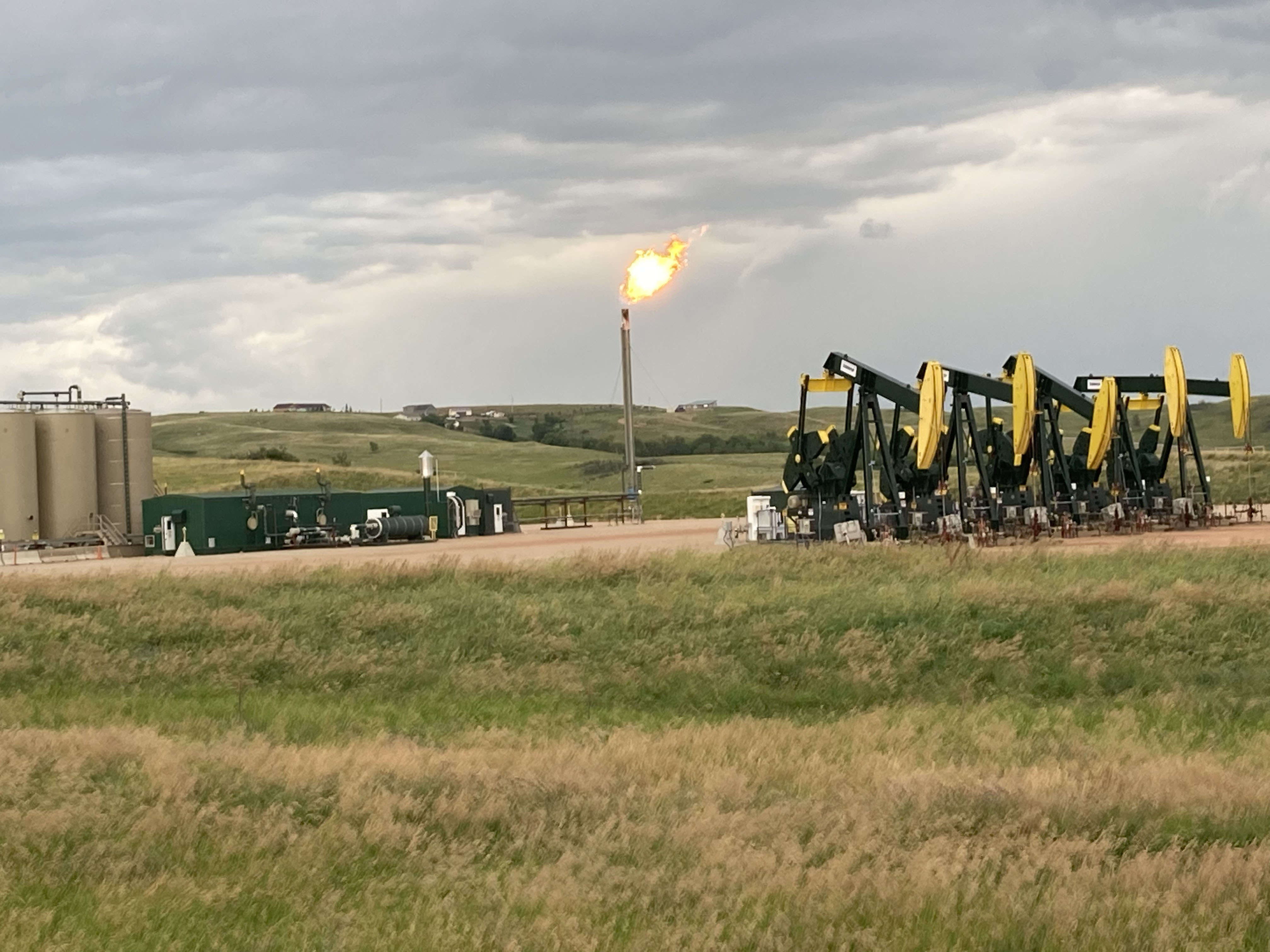Boom Town
Contact
University of Arkansas System Division of Agriculture
Cooperative Extension Service
2301 S. University Ave.
Little Rock, AR 72204

Boom Town
I grew up near an Oklahoma oil boomtown in the 1960s and even laid a little pipeline on the weekends. But few boomtowns rival that of Williston, North Dakota. I specifically wanted to see this town on my western tour because it brings into focus how quickly things change in our modern, ever-changing world.
Williston is in the northwestern corner of the state, 60 miles south of the Canadian border and about 20 miles from Montana. It sits above a layer of impervious Precambrian rocks known as the Williston Basin that extends into Canada, Montana and most of western North Dakota. From about 500 million years ago to about 300 million years ago this basin filled with 16,000 feet of sediment, including the ingredients for today’s oil deposits. Much of the fill was fine grained shale deposited in deep, anoxic oceans, some in shallow seas where limestone formed and some above water where sandstone deposits occurred.
Then, about 70 million years ago, the Rocky Mountains formed south of this region. Tectonic forces caused faulting in the layered rock formations of the Williston Basin and oil followed these faults into a 200,000 square mile section known as the Bakken Formation. Oil is known to occur in a dozen different strata within the Bakken, but much of it is in shale which has traditionally been hard to extract. Beginning about 2008, however, horizontal drilling and improvements in fracking technology made recovery from shale much more successful. The boom was on, and from about 2012 until Covid cooled things off, Williston was a full on boomtown.
Driving into town in the summer of 2022 my first impression was how good the roads were. This is remarkable because most communities don’t build roads to withstand the heavy weight of oil field equipment. I did see a lot of signs proclaiming “Your tax dollars at work” along the roads, so undoubtedly many of these new, smooth roadways are replacements of older roads that the trucks beat to death.
I also noticed several “man camps” coming into town - one of which now sat abandoned - where men rented a mattress on the floor for $500 a month and shared their sleeping quarters with three other roommates. These camps were now all looking for renters, so the early influx of single males has cooled. During the past decade the population almost doubled and housing was in short supply.
The Bakken oil has an inherent disadvantage to Texas Permian Basin crude. It was a long way from the refineries along the Gulf Coast and there is no easy way to get it there. Pipelines were — and are — controversial because they pass through sensitive lands. Rail transport (I saw thousands of oil tankers parked on side tracks west of town) is the primary means of transport, but after the train derailment in Canada a few years ago, people are a bit queasy about that option. Bakken oil is more expensive to produce than Texas oil, with some estimates placing the per barrel price $5 to $10 higher.
Horizontal drilling changed the look of a modern oil field. Instead of the landscaped being dotted with hundreds of individual pump jacks, modern fields have well pads where three to ten pump jacks sit in a row flanked by a collection of oil tanks. Each pump jack draws from a horizontal line heading off underground in a different direction. Many of these well locations have flares that burn off the excess gas that is produced because the infrastructure required to collect the natural gas was not developed in the rush to get the oil out of the ground.
North Dakota reached peak production in 2016 at 1.15 million barrels a day, making it the second leading oil producing state. These oil wells may produce for a couple decades, but peak production from each is usually the first three or four years. To sustain high levels of output, new wells have to be drilled. In October 2019 there were 58 rigs in operation in the Bakken fields. Then Covid hit in the spring of 2020, by May oil prices were in negative numbers and, for a short time, producers were having to pay people to take their oil! This lead to layoffs with half of the oil field workers finding themselves unemployed. The latest rig count I could find indicates there are now only eleven drilling rigs working in the Bakken now.
The oil industry is notorious for its boom-and-bust cycles. The war in Ukraine and its impact on global oil prices is just another piece of the puzzle of our energy future. More oil will be coming from North Dakota, the “help wanted” signs are up, but extracting crude takes some time. The bad old days of the boom are probably behind this small community in the rolling hills of the prairie. For the growing pains it must have experienced over the past decade, Williston seems to be a nice place. Now remember, mine was a summer visit.
